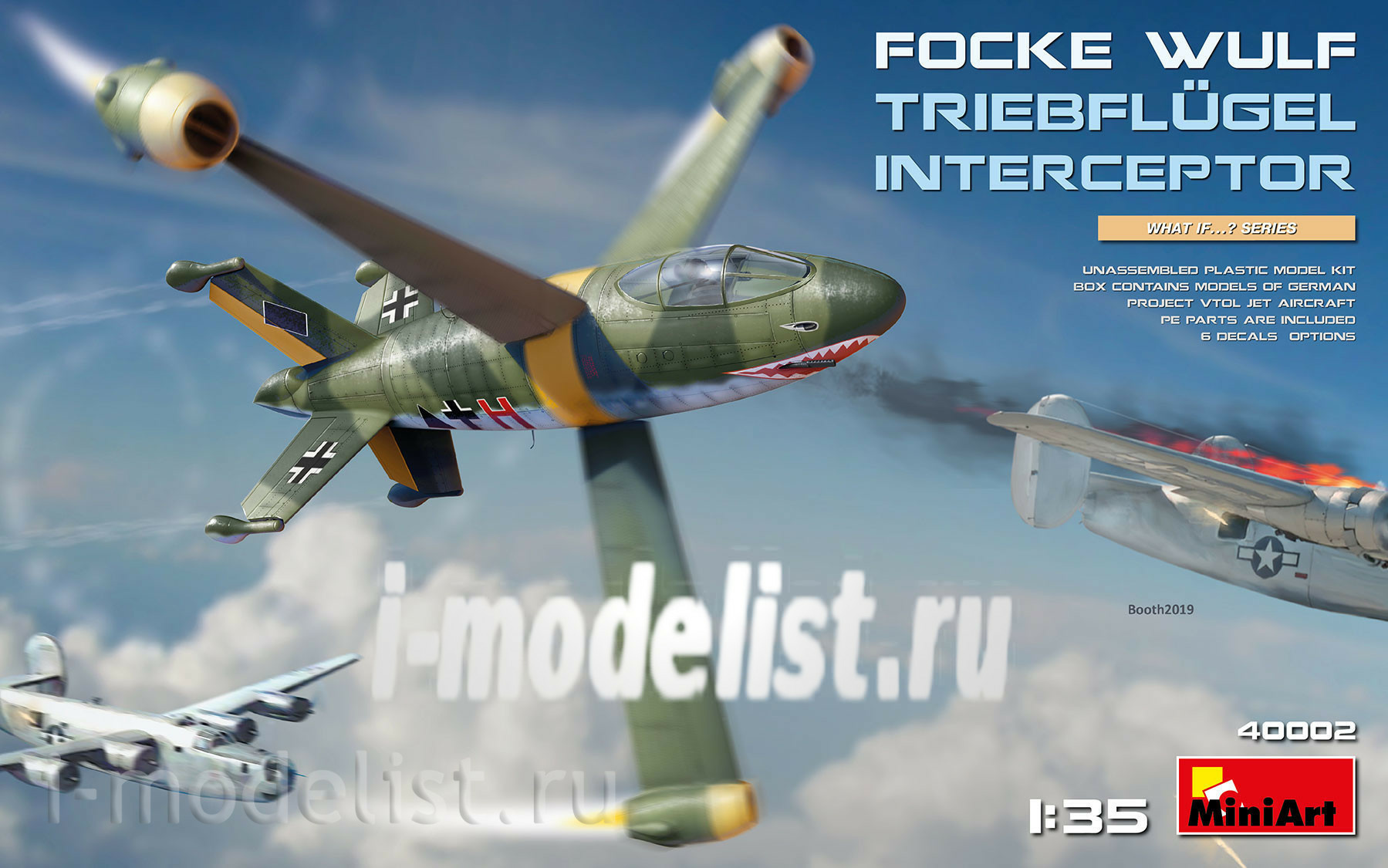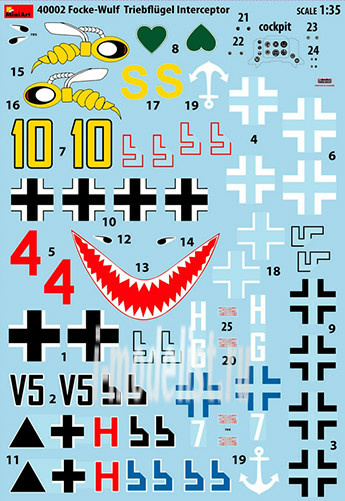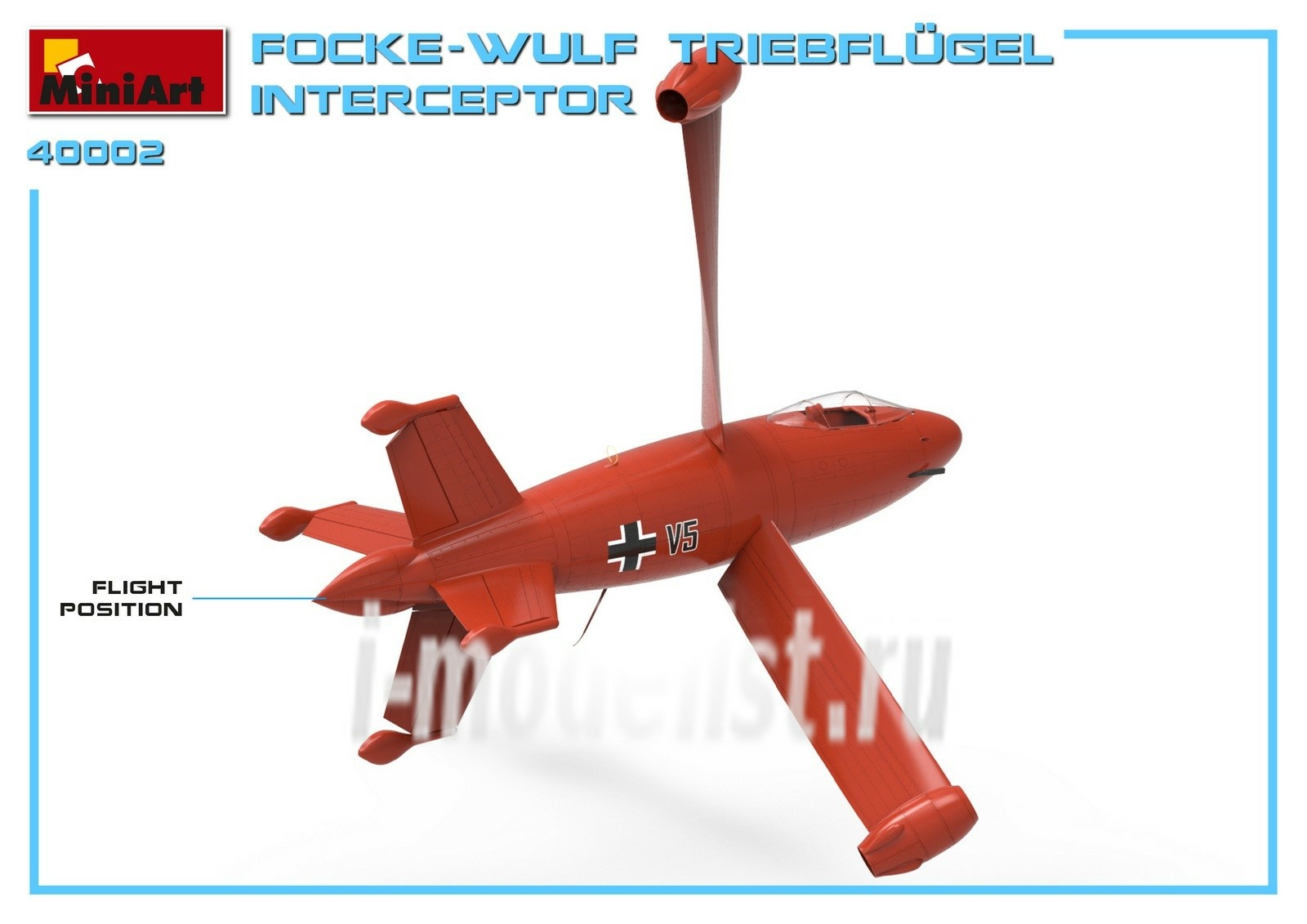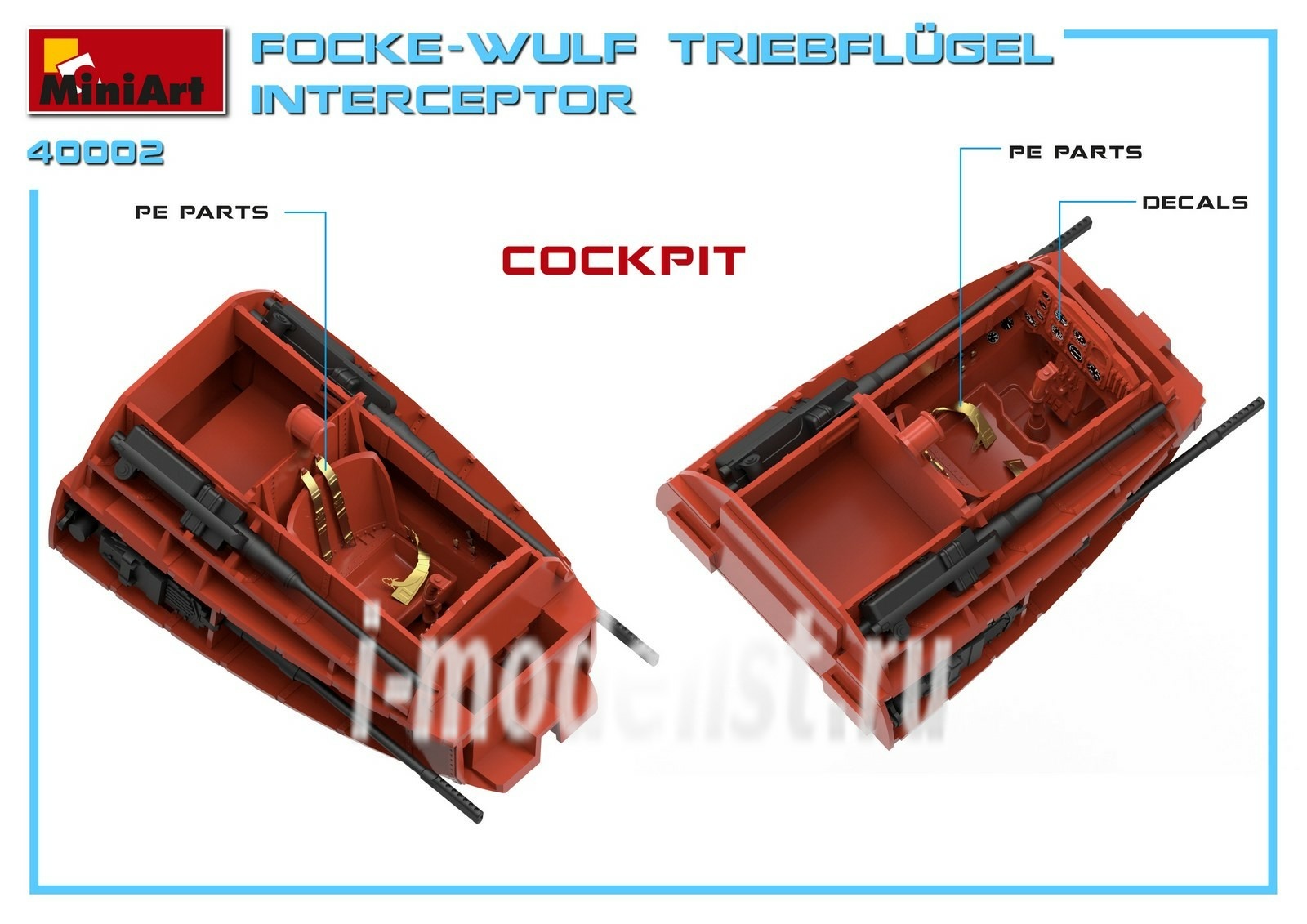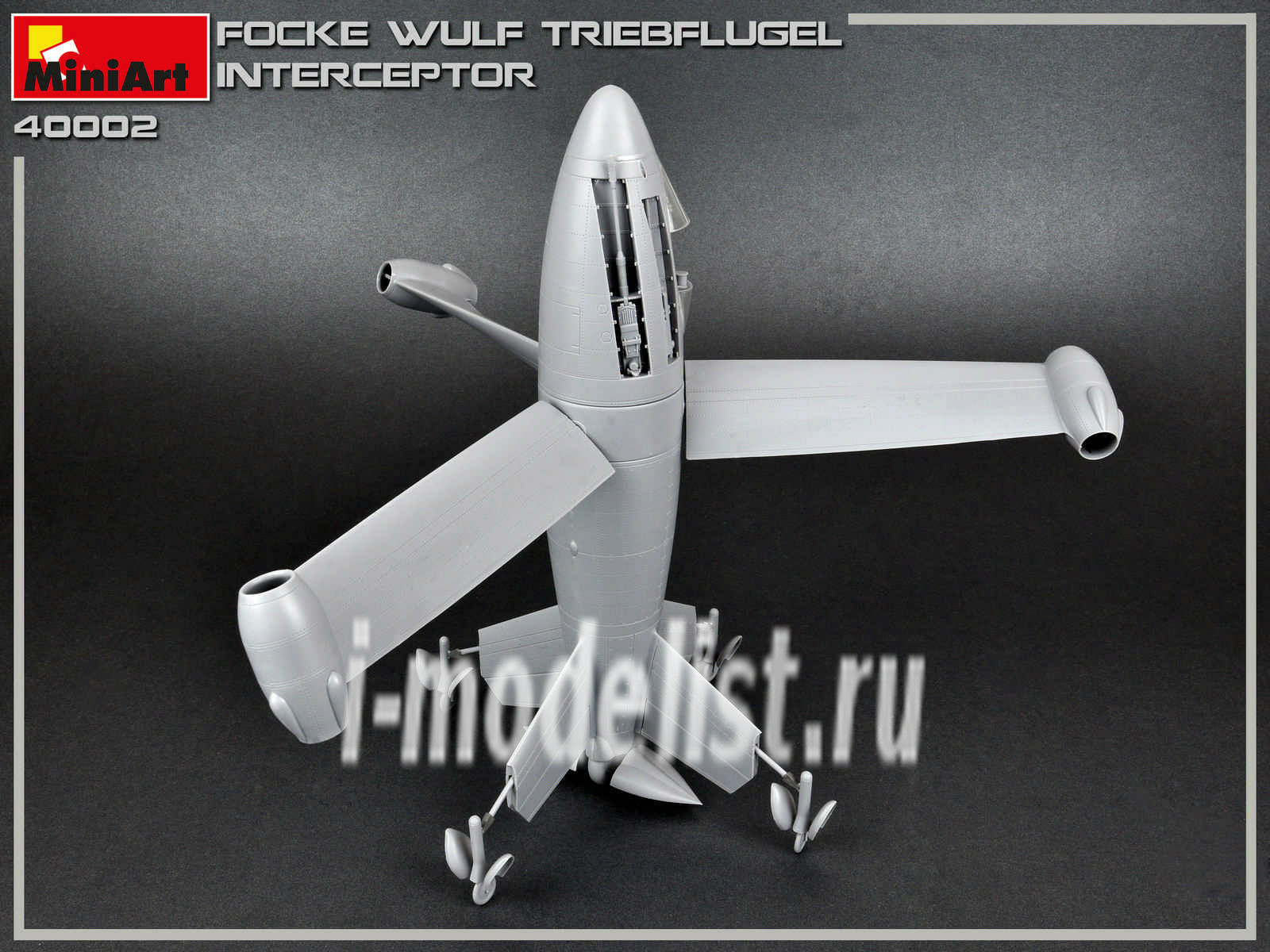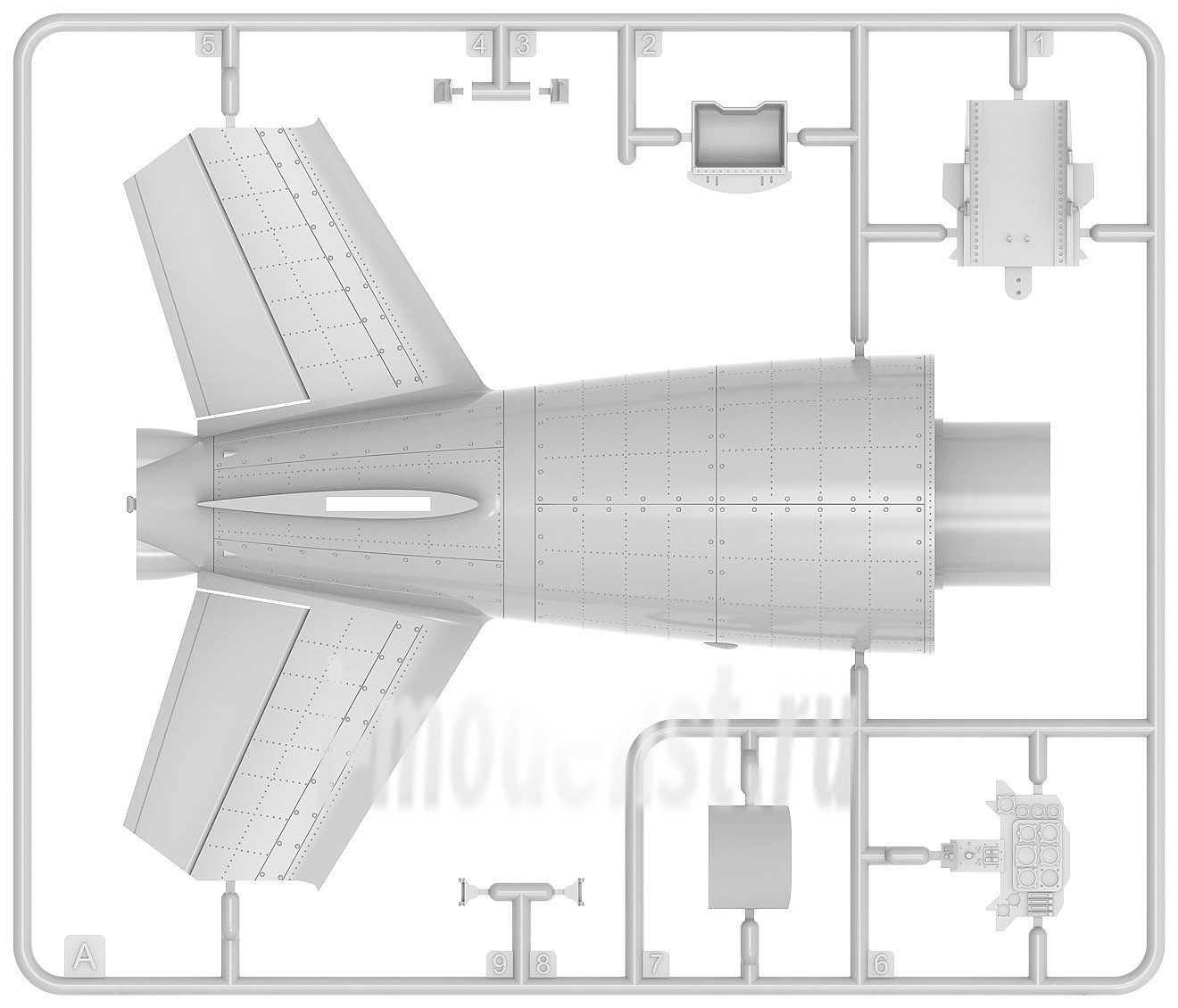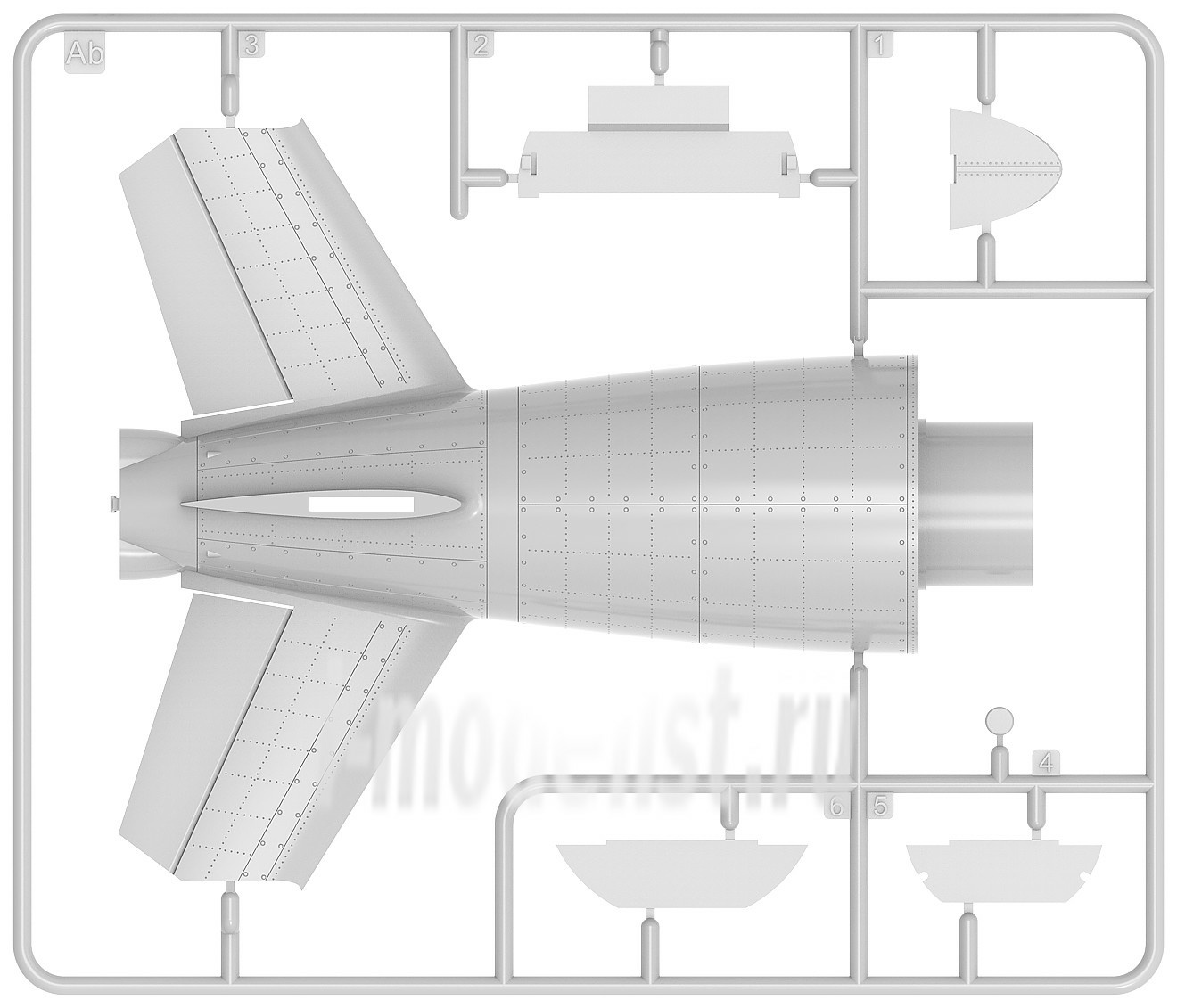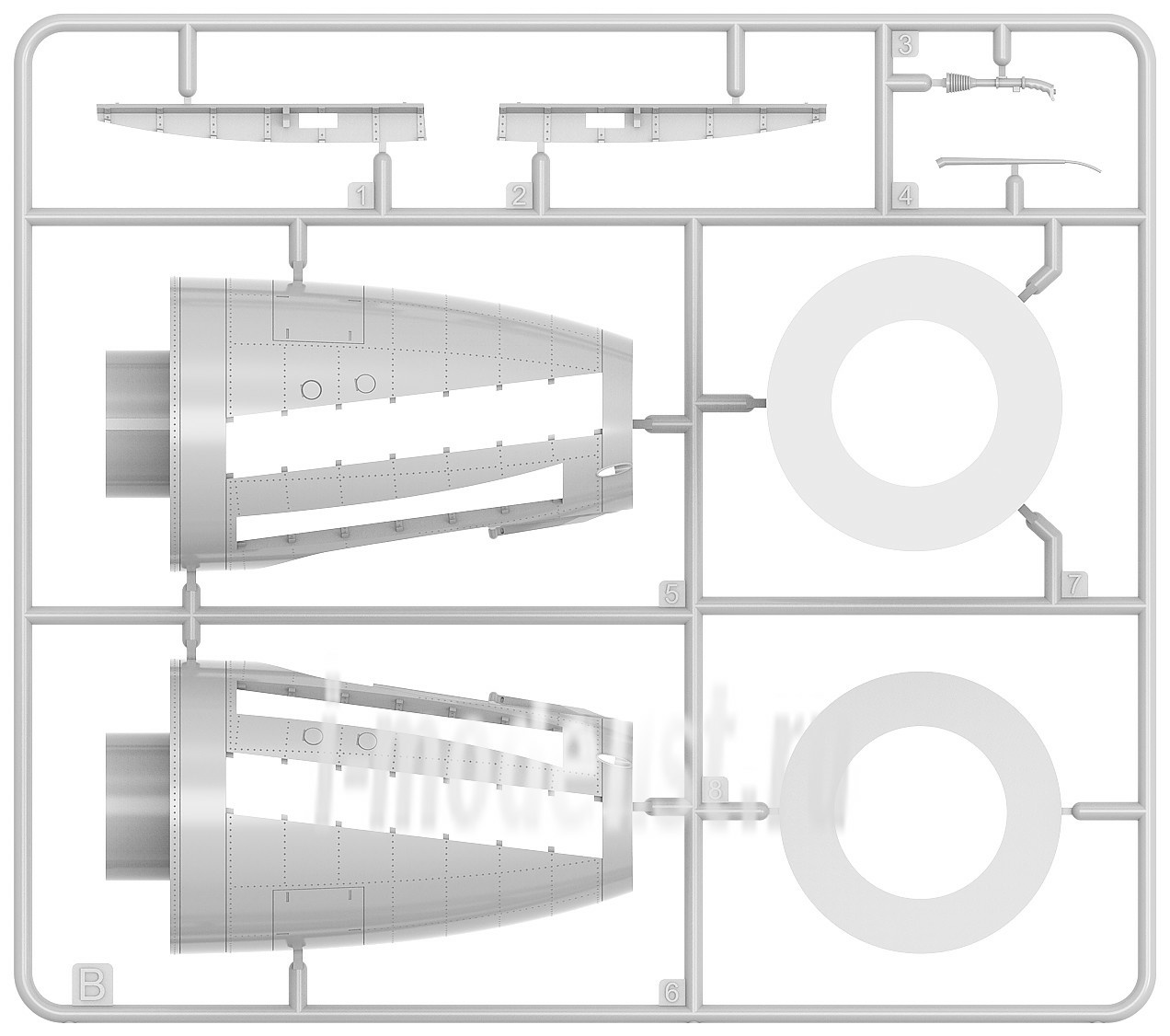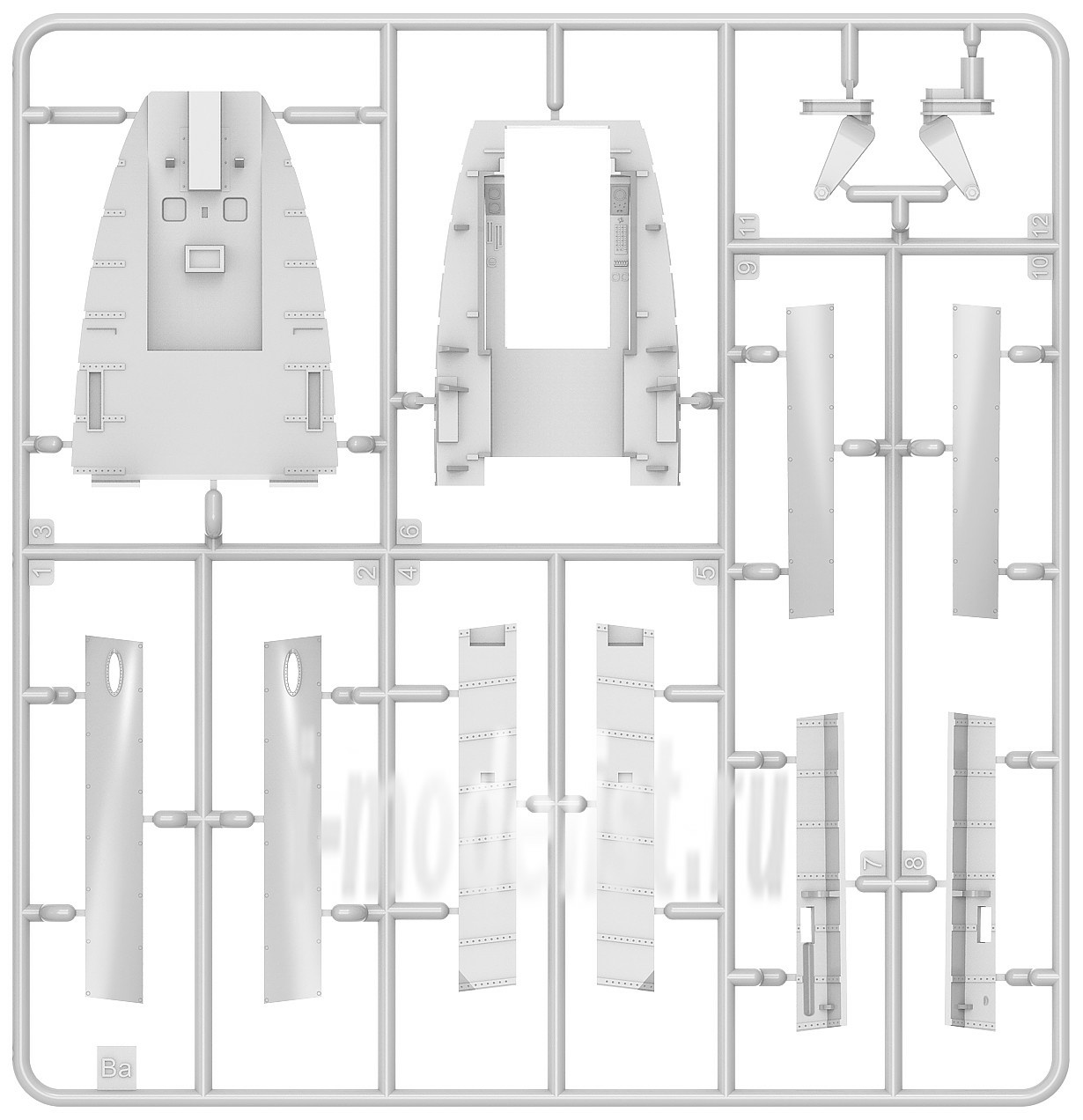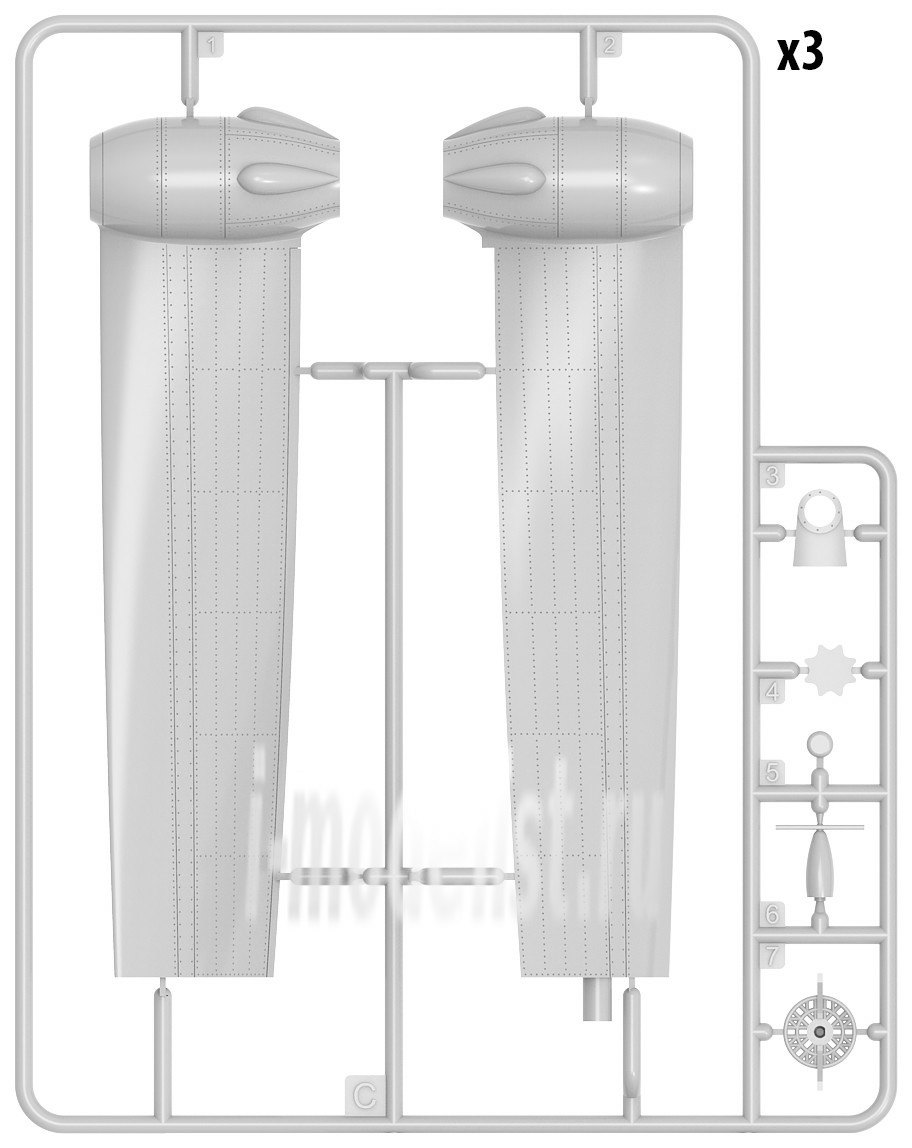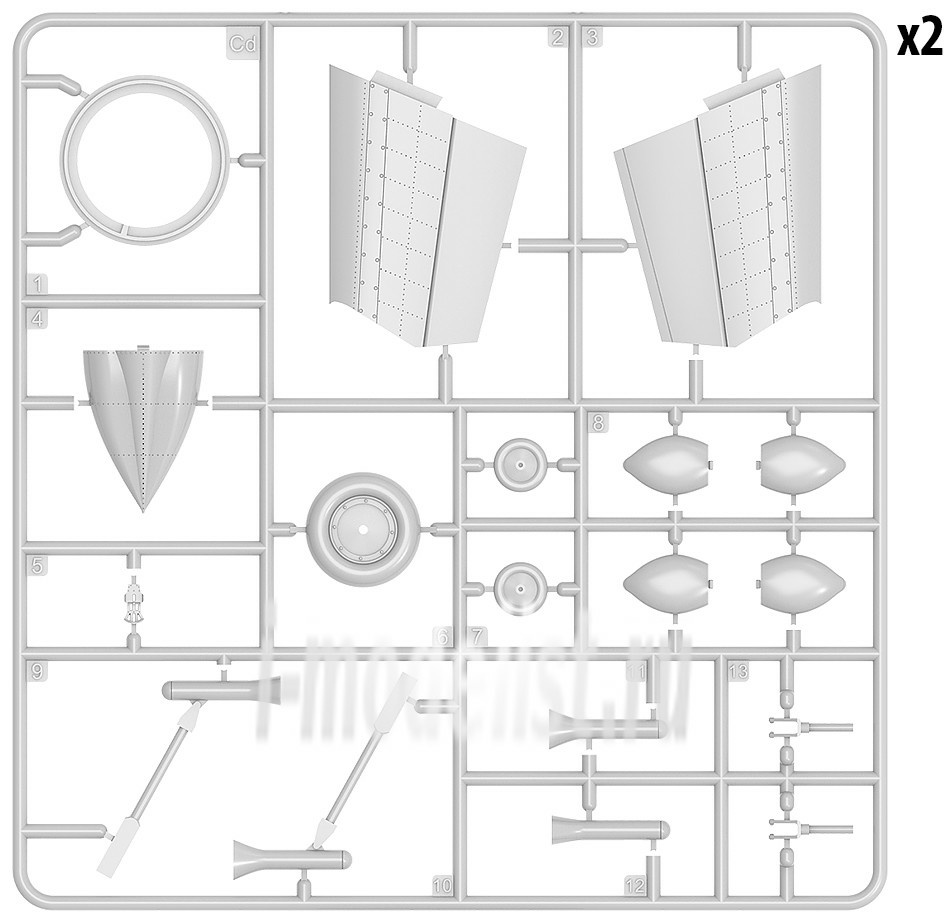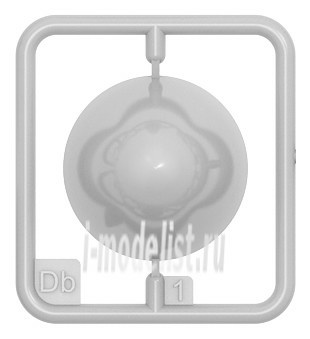Additional Information
Triebflugel - translated from German as wing-propeller, which most accurately reflects the design of the aircraft, which did not have a wing in the usual sense. For vertical takeoff and landing on the tail, as well as for horizontal flight, the aircraft had to use a three-bladed propeller-wing with a diameter of 11.4 m, which was driven by the 839 kg thrust mounted on its ends of the RAMJET design of O. Pabst. It was assumed that the engine will run on non-scarce fuels. For the promotion of the wing was to be used one small LRE company "Walter".
After the vertical take-off, the aircraft should move to a horizontal flight, which should be made with a small pitching angle so that the screw works on the oblique blowing mode and creates, in addition to the horizontal, the necessary lifting force (lateral force on the screw).
Control of the aircraft should be carried out with the help of aerodynamic rudders mounted on the cruciform tail. The pilot had to be located in the bow in a well-glazed cockpit. Weapons - two guns MK 103 and two MG-151 with ammunition was also located in the front. The fuel tank was located in the Central part of the fuselage.
the Design characteristics of the aircraft: takeoff weight 5175 kg; empty weight 3200 kg; the maximum equivalent power at the ground 10200 HP, the maximum rate of climb at the ground 125m/s, the speed of 1000 km/h. As can be seen from these data, in the project of the fighter was given a huge power capacity, unattainable when using other engines - almost 2 HP/kg, which should provide not only a high rate of climb, but also a great flight speed.
the Vertical position of the fuselage during takeoff and landing required the development of a special chassis with one main and four auxiliary supports. The main landing gear was located in the rear fuselage, and retractable - auxiliary support in fairings at the ends of the cruciform tail. All supports were equipped with self-orienting wheels.
Work on the design of the aircraft was limited not only to the stage of preliminary design and experimental studies, but also to detailed design study. Because of its novelty and complexity, the project remained unrealized, but many of its solutions later found their application in other projects, both in Germany (FW-860, He-231) and in other countries.
Caution! Glue and paints are not included.
The configuration and appearance of the model are subject to change without notice.




